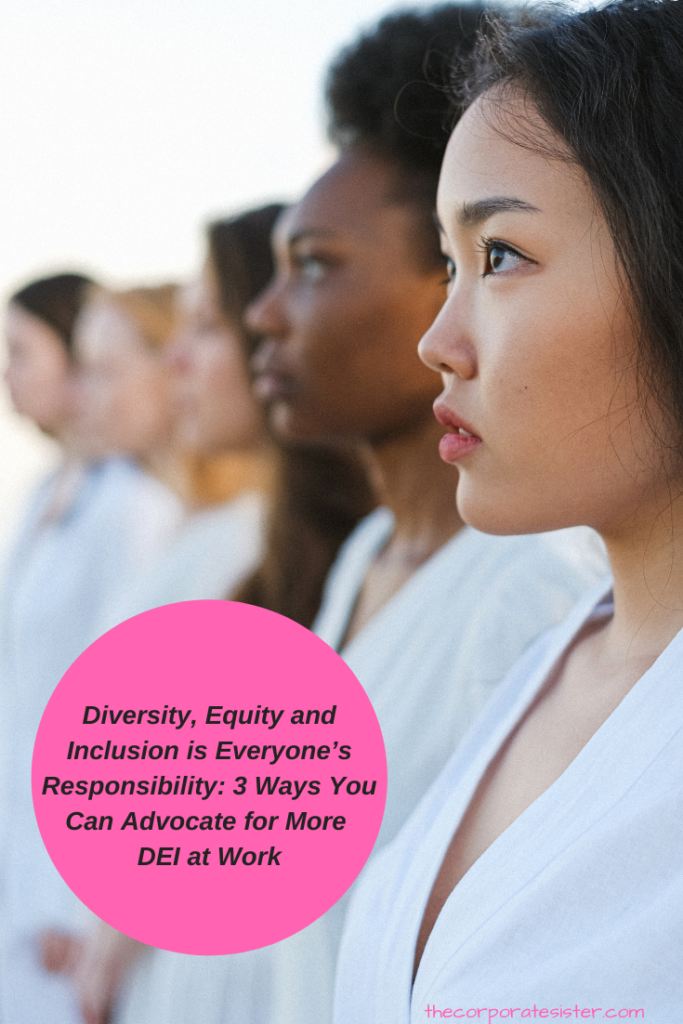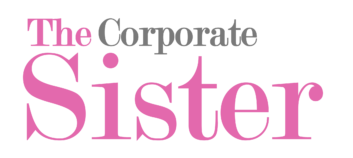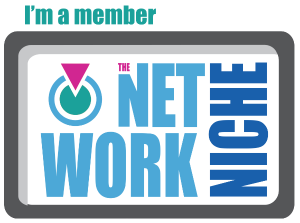Diversity, Equity and Inclusion (DEI) has been a hot topic in the recent years, as companies and organizations have been striving to being more inclusive, equitable and diverse. However, there is obviously still much learning and work to do around ways to advocate for more DEI.
While there is a large misconception around the fact that DEI work has to be done at the highest levels of management, the reality is this work can be completed at all levels of the organization. DEI work is not just the responsibility of management or leadership, although much of its outcome is heavily impacted by the “tone at the top”. At the core, DEI work is the responsibility of each and every individual making up the fabric of an organization. In this sense, everyone can contribute to and advocated for increased diversity, equity and inclusion at work.

Here three major ways in which you, and all of us really, can advocate for increased DEI in your organization:
- Start by educating ourselves and others in the process
DEI is still a relatively new concept, especially in the realm of organizations and companies. Its meaning has been evolving over time, yet there is so much most of us need to learn about it, both in terms of what it truly encompasses, and what the best ways to implement it are. This is why it’s crucial to start by educating ourselves and others in the process.
Educating ourselves on DEI can be done in many ways, from reading books to consulting related studies. Some interesting books to consider include The Memo by Minda Harts, So you want to talk about race by Ijeoma Oluo, or Yellow by Frank H. Wu. Studies such as McKinsey’s 2015 Why Diversity Matters report on public companies, Morgan Stanley’s 2016 research on “Why it pays to invest in gender diversity”, or “The Other Diversity Dividend” report by the Harvard Business Review, are also valuable tools to gain more information on DEI and its positive impact on productivity, innovation and creativity. These educational tools not only help understand the concept and history behind DEI better, but also allow to make the business case for DEI.
What you can do: Read and share books and studies about diversity, equity and inclusion in your workplace, department or team. Educating yourself and others can bring about a real difference in how you work with others, as well as how your direct professional environment deals with DEI.
- Promote sensitivity and anti-bias training
Many, if not most people, are not aware of what constitutes micro-aggressions, or micro-inequities. Even more people are unaware of the struggles faced by minoritized communities, and how individuals, as well as organizations and communities, can help. This is where anti-bias and DEI training can help.
While training and practice cannot (and should not be expected) to eradicate injustices and biases of all kinds, it does contribute to helping educate, sensitize and inform people of these issues.
What you can do: If you’re in a position to include or recommend DEI training as part of your team’s required professional development, please consider doing so. You can also join Employee Resource Groups (ERGs), which are voluntary, employee-led groups devoted to fostering inclusive and diverse workplaces, and recommend bias and diversity trainings if they are not already being offered.
- Contribute to Changing Your Organization’s Culture
Ultimately, diversity, equity and inclusion must be reflected in the organization’s culture in order to truly have a positive impact. A diverse, equitable and inclusive culture is one where everyone can freely contribute, show up as their authentic selves, and be treated equitably. Changing an organizational culture towards increased diversity, equity and inclusion is a monumental endeavor, which requires everyone’s input and collaboration.
It starts with assessing where the organization stands in terms of DEI, and be honest about the culture of the place. This can be done by asking for feedback and being open to individuals’, teams and units’ assessments of the organization. It also requires displaying empathy and being open to differences of opinion and even virulent disagreements and conflicts in the process. Yet, as challenging a process as it can be, it also has the potential of identifying the blocks and obstacles, such as the proverbial “glass ceiling” for instance, standing in the way of a more diverse, equitable and inclusive culture.
What you can do: Be part of the culture change at your organization, in whatever capacity you can.
How are you advocating for more diversity, equity and inclusion in your organization?
The Corporate Sis.







